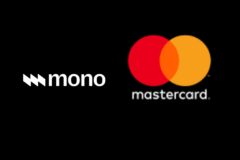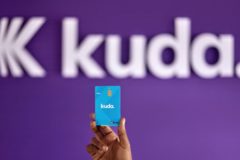Kuda MFB, a neobank operating under the Nigerian microfinance bank licence, has been recording losses for the past two years.
By the end of the 2021 financial year, the company recorded a loss of ₦6,092,554,866 ($14,214,681), a 602% rise from the ₦868,062,000 ($2,025,295) loss it made in 2020, according to its financial report seen by TechCabal.
The financial report indicated that the company’s revenue increased by 4,315% from ₦72,649,000 in 2020 to ₦3,207,177,570 in 2021. However, after every expense had been deducted, the company closed the year at a net loss, with high credit loss/impairment charge and operating expenses contributing the most to the loss.
TechCabal reached out to Kuda for comment, but the neobank hasn’t responded at the time of publication.
Bad loans delivered the hardest stroke
The report said that “the nonperforming loan (NPL) recorded by the firm is too high for the comfort calculated at 69%”, and this, as expected, drove the neobank to a high impairment rate—valued at ₦2,258,698,669. For context, loans are considered impaired when, based on current information and events, it is probable that the creditor will be unable to collect all interest and principal payments due according to the contractual terms of the loan agreement.
Specifically, in the analysis part of the report, the impairment is said to have eroded 96% of the interest income made from the loan offer. What this means, in general, is that Kuda extended a lot of bad credit through its overdraft product and that ate into its balance sheet.
Kuda, a few days before it announced its $25 million Series A round in March 2021, started piloting its overdraft product with over 2,500 users who “have been using their Kuda accounts actively”. By June, it claimed that the product had hit 50,000 users weekly. The company once said in a statement that at the end of the second quarter of 2021, they had disbursed $20 million worth of credit to over 200,000 qualified users, with a 30-day repayment period.
In fact, the company’s co-founder and CEO Babs Ogundeyi once claimed that the neobank has seen “minimal” default because of its approach. “We use all the data we have for a customer and allocate the overdraft proportion based on the customer’s activities, aiming for it not to be a burden,” Ogundeyi said in that statement.
The overdraft feature was received with mixed feelings. According to a risk analyst who spoke to TechCabal anonymously, Kuda needs to revamp and build more risk assessment into its overdraft offering or scrap it entirely. “But,” he added, “scrapping the offering would be unwise as lending, if done right, has the potential of pushing the company’s bottom line to a high net positive.”.
It’s worth mentioning that traditional banks generate a big part of their revenue from lending. In fact, while Kuda’s NPL ratio ended the year at 69%, the average ratio in the traditional banking industry dropped to 4.8% in the same period. Traditional banks mostly extend credit to a few low-risk businesses with substantial collateral that already mitigates defaulting, while Kuda only works with users’ activities on its app. Still, the difference between the two ratios is disturbing.
The aforementioned financial report analysis similarly stated that “the firm’s risk appetite, criteria and strategy relating to retail and business loan calls for immediate restructuring.”
More people, more expenses
Kuda’s personnel expenses also increased by close to 500% from ₦215,437,000 in 2020 to ₦1,285,381,188 as a result of its increasing employment of key management staff at high cost, salary review, and promotion of current staff. Among many key hires, the company extended Ryan Laubscher, who was only an advisor through 2020, a full-time role as its group COO. Laubscher is currently the company’s chief expansion officer leading its expansion effort.
This increase in staff count also subjected its depreciation and amortisation—laptop, furniture, etc—to a serious jump by 246% to ₦64,326,473, from ₦18,590,000. Collectively, all of Kuda’s operating expenses (OPEX) went up 652% to ₦7,033,275,412 in 2021 from ₦935,560,000 in 2020. “The income of the firm does not justify this spend in the short time,” said the statement.
Still, the neobank is hiring high-ticket talents across the world. Just last month, it announced the appointment of Pavel Khristolubov, ex-COO of Moscow-based Tinker Bank, as COO; and Italian Elena Lavezzi, ex-general manager of Italy and Southern Europe operations at Revolut, as CSO. But, despite its recent high-ticket hires, the company, a few days ago, confirmed to TechCrunch that it has laid off about 23 of its employees—less than 5% of its 450-strong workforce.
The bank also spent a ton of money on branding and marketing. By the first quarter of 2021, the company had spent over $1 million on marketing. In the summary of the financial report referenced, without stating the total amount spent on marketing and branding for the entire financial year in review, the marketing spend was attributed to a major reason its OPEX was on the high side.
When Kuda launched, bank transfers on its app were free (first 100 transfers or 25 free monthly transfers) and there was no card maintenance fee, in keeping with the bank’s payoff: “The Bank of the Free”. While this is good for customer acquisition, the free-transfers model was criticised by many industry commentators. A financial analyst who spoke to TechCabal said, “Banking isn’t free anywhere, and disruption doesn’t necessarily have to be free. What’s important is access, simplicity, and ease of use.” The report indicated that the neobank generated more income from value-added services like airtime purchases than its core banking services. However, though Kuda said it’s only following a Central Bank directive, it has now started charging fees on transfers and deposits.
Kuda raised $55 million in Series B in August 2021 and is now valued at $500 million, making it more valuable than some Nigerian banks. While it’s now obvious that the bank isn’t making money as traditional banks do, and its valuation is based on future projections of what could be, what can the bank do to break even?
The neobank said in its Series B announcement that it now has 1.5 million users and, as it is in the financial industry, customer lifetime value is often a bigger deal. Kuda and its investors are likely playing the long game of growing their users, the long-term revenue generated from these customers is more valuable than the short-term costs or losses incurred. However, breaking even might take longer than it projected until the company figures out how to monetise or improve on its existing offerings.
On Friday, the 23rd of September, TechCabal in partnership with Moniepoint (by TeamApt) will host the most important players in tech and business on and off the continent to discuss the future of commerce in Africa. Register now to attend





















